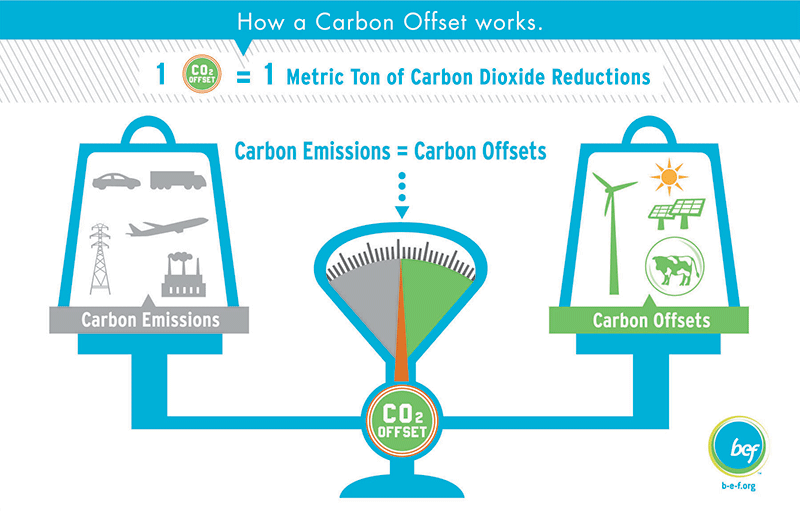Global air travel accounts for two percent of the world's carbon dioxide emissions. While that might sound like a small percentage, it's equivalent to 860 million metric tonnes of carbon dioxide every year. (For reference, the average Canadian emits 15.7 tonnes of CO₂ per year.) At the current rate of greenhouse gas emissions, scientists warn that we have only 10 years left to reverse global warming and avoid further catastrophic environmental effects. Which means many climate activists are pledging to give up flying altogether.

Flying less is a great way to reduce your personal carbon footprint — but for people who rely on air travel to visit their families and perform their jobs, this might not be a feasible option. Enter: carbon offsets, a method of counteracting carbon emissions by investing in global carbon-reducing projects.
Cool Effect is a nonprofit dedicated to supporting global greenhouse gas-reducing projects like deforestation prevention and methane capture. Via the organization's Travel Offset Tool, you can calculate your personal carbon output per flight (based on the duration) and then pay to offset the corresponding tonnes of carbon emitted via the 14 carbon-reducing or carbon-preventing global Cool Effect projects. You can also buy carbon credits from Reformation, where you can choose to offset the carbon emitted by an average wedding, an international flight, and a domestic flight, as well as the amount of carbon emitted by an individual or a family over a six or 12 month period. For these carbon offsets, your money goes to Gold Standard verified clean energy projects through NativeEnergy.
Of course, it should be said that the science here is hardly exact — achieving a carbon neutralizing one-to-one ratio is difficult when there are so many unquantifiable differentials from flight to flight and person to person. But if you're interested in helping to reduce the planet's carbon emissions and you can't afford to reduce your air travel, carbon offsets are a great way to start.
Curious to learn more, we talked to Jodi Manning, Director of Marketing at Cool Effect about how exactly carbon offsets work:
What are carbon offsets and why should people care about them?
At its basic core, a carbon credit or offset is a measurement of greenhouse gas emissions reduced by a project — exactly one metric tonne of carbon emissions — which can then be sold to compensate for emissions created somewhere else in the world.
How does one reduce carbon?
If you save a tree from being cut down, which is called carbon sequestration, the carbon that the tree holds is saved from being emitted. And you can be awarded a carbon credit for that. Another example is a cook stove. In many parts of the developing world, they use open source flames like you would at a campfire. If a project is building cookstoves that vent outside and use less fluid, which then scientifically reduces carbon emissions, they can then be awarded carbon credits.
How does the Cool Effects travel offset tool work?
People were trying to understand the carbon output of their flights. Everybody knows how long they sit on that airplane, so we created a tool that's based on the number of hours. There's a calculation for short haul, medium haul, and long haul flights, and it not only calculates the carbon but it puts a price on it. And 100% of the time, consumers are shocked at how little it costs to actually offset their flights. So we have seen a rapid increase in people taking action using this tool.